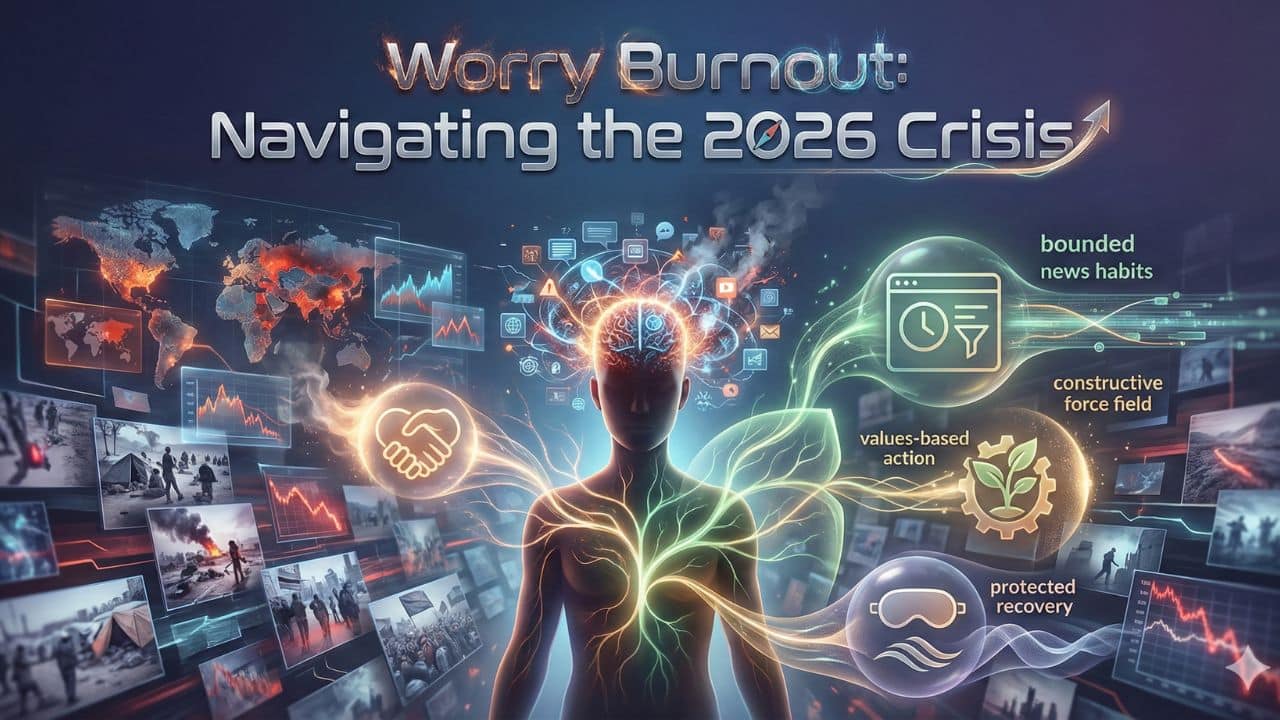The digital age has revolutionized how we learn. It’s no longer confined to classrooms or corporate training rooms.
Learning now happens anywhere, anytime.
This shift has been facilitated by Learning Management Systems (LMS). These platforms have transformed the landscape of education and training.
But what exactly is an LMS?
In simple terms, an LMS is a software application. It’s used for the administration, documentation, tracking, reporting, and delivery of educational courses or training programs.
They’ve become a vital tool for educational institutions and businesses alike. They provide a centralized and automated way to manage and deliver learning content.
But not all LMS are created equal.
There are different types of LMS, each with its unique features and benefits. These range from cloud-based solutions to open-source platforms, corporate LMS, academic LMS, and mobile learning platforms.
Choosing the right LMS can be a daunting task.
This guide aims to simplify that process. We’ll explore the top 5 types of Learning Management Systems as of 2025. We’ll delve into their features, benefits, and potential use cases.
Whether you’re an educator, a corporate trainer, or a learner, this guide is for you.
It’s time to navigate the world of LMS and enhance your online learning experience.
Welcome to the “Top 5 Types of Learning Management Systems LMS 2025 Guide”. Let’s get started.
Understanding Learning Management Systems (LMS)
Learning Management Systems are pivotal in modern education and training environments. They serve as a hub for learning activities.
At their core, LMS provides a structured approach to delivering content. They also track learner progress and manage educational courses.
A typical LMS supports online and blended learning. It caters to both asynchronous and synchronous learning modes.
Educators can create and manage courses with ease. Learners can access resources and support efficiently.
The adaptability of LMS is a key feature. They tailor learning experiences to meet diverse needs.
Several components are common across most LMS. These include:
- Course content delivery: Enables the sharing of various materials.
- User management: Handles registration, tracking, and reporting.
- Communication tools: Provides forums, chats, and message boards.
- Assessment and testing: Features quizzes, tests, and other evaluation methods.
As technology evolves, so do the functionalities of LMS. From simple content delivery platforms, they’ve grown into sophisticated tools.
Modern LMS boasts advanced features like AI-based personalization. It ensures the learning journey is adaptive and engaging.
Integration with other technologies enhances their utility. This ensures a seamless experience across different learning environments.
In sum, LMS has reshaped how we approach education and training. Their ability to integrate modern technology ensures they’re future-ready.
The Evolution of LMS Software (2020-2025)
The past few years have been transformative for LMS technology. As we progressed from 2020 to 2025, several key trends emerged.
Initially, LMS platforms were primarily content delivery tools. They have since evolved to provide a holistic learning experience.
One major development has been the integration of AI and machine learning. These technologies enable personalized learning experiences.
Real-time data analytics have also become a standard feature. They offer insights into learner behavior and course effectiveness.
Cloud-based LMS solutions have gained popularity. They offer scalability and flexibility unmatched by traditional systems.
This period also saw a rise in mobile learning capabilities. Learners can now access content seamlessly from various devices.
Another significant change has been the focus on user-friendly interfaces. Intuitive design increases accessibility for diverse user groups.
Enhancements in social learning features have fostered better collaboration. This trend reflects the growing emphasis on community-based learning.
In summary, LMS platforms have matured into comprehensive learning solutions. They accommodate the dynamic needs of modern learners and educators.
Defining Modern Learning Management Systems
To define modern LMS, we need to consider several distinguishing features. These characteristics set them apart from earlier versions.
One standout feature is their adaptability. Modern LMS systems can adjust to the unique requirements of different users.
They prioritize an intuitive user interface. This makes it easy for users of all technical skills to navigate and use.
Another aspect is their ability to support diverse learning modes. Modern LMS platforms cater to self-paced, instructor-led, and blended learning scenarios.
Advanced reporting and analytics are standard. Educators gain valuable insights into student performance and course outcomes.
Key Features of Modern LMS:
- Personalization: Customizes the learning path based on the learner’s needs.
- Mobile compatibility: Ensures a seamless learning experience on various devices.
- Gamification: Uses elements like badges and leaderboards to increase engagement.
- Social learning tools: Facilitate collaborative learning experiences among users.
- Comprehensive content management: Streamlines the creation, storage, and distribution of learning materials.
Security is another critical consideration in defining modern LMS. They implement robust data protection measures to safeguard user information.
Lastly, integration capabilities are vital. Modern LMS seamlessly connect with other educational technologies and tools.
In essence, today’s LMS platforms are versatile, secure, and learner-focused. They provide a dynamic environment for education and professional development.
Type 1: Cloud-Based LMS Solutions
Cloud-based Learning Management Systems are reshaping education and corporate training. They offer unique advantages compared to traditional systems.
The key benefit is scalability. Organizations can scale up or down based on their needs. This flexibility is crucial in dynamic environments.
Cloud-based LMS solutions also ensure easy access to learning materials. Learners and educators can connect from anywhere with an internet connection.
These systems reduce the need for expensive hardware investments. By leveraging cloud infrastructure, they offer cost-effective solutions.
Maintenance and updates are handled by the service provider. This minimizes the need for internal IT resources.
User experience is significantly enhanced with cloud solutions. They provide seamless performance even during high usage periods.
The deployment time for cloud-based LMS is minimal. This quick setup means institutions can begin using the system without delay.
Data security remains a top priority. Cloud providers implement robust measures to protect sensitive information.
The move to cloud-based systems supports green initiatives. By reducing physical infrastructure, they lower the carbon footprint.
Finally, the cloud enables continuous innovation. Regular updates introduce new features and improvements without disruption.
Scalability and Accessibility
Scalability is a game changer for educational institutions and businesses. Cloud-based LMS can handle fluctuating user loads effortlessly.
They allow for the addition of new users without performance degradation. This flexibility supports growing learning communities seamlessly.
Additionally, scalability in cloud systems means more customization options. Organizations can tailor their LMS to specific learning paths as needed.
On the accessibility front, the cloud ensures learners can connect globally. It breaks geographic barriers, making learning inclusive and accessible.
These systems support a range of devices and platforms. Users can access training on mobile phones, tablets, and desktops with ease.
Accessibility extends beyond mere device compatibility. Cloud-based LMS often includes features like multi-language support and assistive technologies for diverse learners.
The ability to maintain content consistency across platforms is crucial. This ensures all learners receive the same high-quality educational experience.
In conclusion, scalability and accessibility make cloud-based LMS ideal for modern education. They support diverse learning needs effectively and efficiently.
Integration with Other Technologies
Integration is vital for cloud-based LMS to maximize their utility. Seamless connectivity with other systems enhances learning experiences.
Common integrations include:
- CRM software: Sync learner data and track engagement.
- HR systems: Align training with employee performance and development.
- Video conferencing tools: Enable live classes and virtual meetings.
- Content authoring tools: Streamline content creation and updates.
- E-commerce platforms: Facilitate course sales and subscription management.
These integrations create a cohesive learning ecosystem. They ensure data flows smoothly across different platforms, enhancing user experience.
The integration capabilities of cloud-based LMS reduce administrative burdens. They automate tasks like enrollment, course updates, and progress tracking.
Moreover, integrating LMS with other software provides comprehensive analytics. Educators and trainers gain insights into learner behaviors across platforms.
This data helps in refining course content and improving learner outcomes. Consistent data sharing across systems enhances decision-making and strategic planning.
Ensuring compatibility with existing systems is crucial for successful integration. Cloud-based LMS solutions often use open APIs for greater flexibility.
Overall, integration enriches the functionality of cloud-based LMS. It transforms them into comprehensive tools for education and professional development.
Case Studies: Successful Cloud-Based LMS Implementations
Several organizations have leveraged cloud-based LMS for transformative results. One example is a multinational corporation enhancing global training.
The corporation deployed a cloud-based LMS to standardize employee training. This move significantly reduced costs and improved learning outcomes.
Another success story involves a university adopting a cloud LMS. It enabled remote learning solutions during the pandemic, maintaining educational continuity.
By moving to the cloud, the university offered students flexible learning options. This ensured all learners had access to materials and support.
A third case is a non-profit organization using a cloud-based LMS for volunteer training. The system provided easy access and updated content delivery worldwide.
This implementation enhanced volunteer engagement and learning efficiency. The flexibility and accessibility of the cloud proved invaluable in their mission.
These case studies highlight the adaptability and effectiveness of cloud-based LMS. They demonstrate significant improvements in learning delivery and user satisfaction.
The successes underscore the importance of choosing the right LMS solution. It can lead to substantial advancements in education and training initiatives.
Type 2: Open-Source LMS Platforms
Open-source Learning Management Systems have gained popularity due to their flexibility. These platforms offer organizations the ability to tailor the system to their unique needs.
Educational institutions and businesses appreciate the ability to access the source code. This transparency allows them to make modifications and customizations.
Open-source LMS platforms generally come with no licensing fees. This makes them an attractive option for budget-conscious organizations.
By nature, open-source solutions encourage community collaboration. Users can share improvements and contribute to the development of these systems.
Many of these platforms have large, active communities. They provide support, resources, and ongoing developments, ensuring the system evolves.
Open-source LMS platforms align well with organizations prioritizing control. They offer unparalleled freedom in deciding system functionalities.
Security, while traditionally a concern, is handled through community vigilance. Regular updates and patches from the user community address vulnerabilities.
While customization offers advantages, it requires technical expertise. Therefore, organizations should have skilled IT teams for efficient implementation.
The availability of plugins and add-ons is extensive. This further enhances the functionality of open-source LMS to meet diverse educational needs.
Institutions should consider the total cost of ownership when opting for open-source. Customization and maintenance could involve additional resources.
The ability to adapt and innovate keeps open-source LMS platforms compelling. They remain a favored option in dynamic learning environments.
Customization and Flexibility
Customization is a cornerstone of open-source LMS platforms. Organizations can tailor interfaces and functionalities to suit their needs.
The flexibility allows adjustments in visual layout and user experiences. This ensures alignment with branding and design requirements.
Custom solutions can be developed to integrate specialized content or tools. This creates a highly personalized user experience for learners.
Beyond interface customization, open-source LMSs offer functional flexibility. Institutions can decide which features to implement or develop anew.
This adaptability is particularly useful for organizations with unique training goals. It supports non-standard educational approaches effectively.
For customization, an organization may employ in-house developers or external consultants. Either approach should align with strategic learning objectives.
Flexibility in open-source LMS platforms extends to scalability. They can evolve alongside the institution’s growth and changing demands.
While technical expertise is required, the rewards of customization are substantial. It provides a learning environment finely tuned to organizational specifics.
Community Support and Development
Open-source LMS platforms thrive on community engagement. This collective approach fosters innovation and improvement.
Users actively contribute to the platform’s growth through feedback, code, and discussions. The collaborative nature ensures the LMS remains current.
Communities often host forums, webinars, and meetups. These events provide learning opportunities and build connections among users.
Common types of contributions within the community include:
- Bug fixes: Users can report issues and propose solutions.
- Feature enhancements: New functionalities are suggested and developed.
- Documentation: Community members improve and expand user manuals and guides.
- Support: Help forums address user queries and foster problem-solving.
- Localization: Efforts to translate the LMS make it accessible globally.
These contributions enhance usability and feature breadth. The collective knowledge and expertise guarantee continuous development.
Open-source LMS users benefit from shared resources, reducing dependence on vendor support. The community often provides timely help for technical challenges.
The active participation in these communities ensures the longevity and innovation of open-source platforms. It empowers users to take charge of their learning ecosystem.
Case Studies: Open-Source LMS in Action
Open-source LMS platforms have transformed various organizations. These case studies illustrate their practical application and benefits.
A notable example is a university that customized an open-source LMS. They tailored it for their medical courses, integrating simulation-based learning tools.
This customization allowed them to track specific learning outcomes. It also provided a platform for peer interaction and collaborative learning.
Another example is a non-profit organization that developed a specialized LMS. They tailored it to deliver agricultural education in remote areas.
Their open-source choice enabled offline access. This was crucial for participants in regions with unreliable internet connectivity.
Additionally, a corporate training department implemented an open-source LMS. They customized the system to incorporate role-specific training modules.
This flexibility resulted in highly relevant training experiences. It boosted employee engagement and improved skill alignment with job roles.
These cases demonstrate the versatility and efficacy of open-source LMS platforms. They highlight the potential for innovation and targeted learning solutions.
Type 3: Corporate LMS for Training and Development
Corporate Learning Management Systems are essential in modern business environments. They facilitate streamlined training and development processes. With an ever-evolving workforce, these systems play a crucial role in employee growth.
A Corporate LMS helps organizations manage, track, and deliver training programs. This automation brings efficiency to employee training initiatives.
These systems are tailored to meet specific corporate objectives. From onboarding to upskilling, they cover all phases of employee learning.
A distinguishing feature of corporate LMS platforms is their focus on engagement. Interactive elements help keep learners motivated and attentive.
With a corporate LMS, courses can be easily updated or modified. This ensures that training materials are always current and relevant.
Data analytics is another significant advantage. Companies can track employee progress and make informed decisions based on results.
Corporations benefit from a centralized platform for training. It consolidates various learning resources and integrates with other business systems.
Mobile access ensures employees can learn from anywhere. This flexibility is crucial for remote work environments.
Integrating corporate culture into the learning system is vital. A personalized LMS can align training with company values and goals.
Continuous employee development is key to retaining talent. Corporate LMS platforms support lifelong learning and professional advancement.
Customization options allow for the inclusion of bespoke content. This personalization enhances the relevance of training programs.
Features for Employee Engagement
Employee engagement is critical in any learning environment. Corporate LMS platforms offer multiple features to enhance this aspect.
Gamification is a popular method for boosting engagement. By integrating game-like elements, learners become more motivated to complete tasks.
Social learning features enable collaboration among employees. Forums, discussion boards, and group assignments enhance interactive learning.
Personalized learning pathways can accommodate different learning styles. Employees receive content that is relevant and suited to their roles.
Real-time feedback and assessments keep learners on track. Instant results and guidance help identify areas for improvement.
Regular updates and new course offerings maintain interest. An evolving curriculum encourages repeat engagement with the LMS.
Recognition through badges or certificates can incentivize participation. These rewards add a competitive, motivating element to learning.
Compliance and Regulatory Tools
Companies face strict regulatory requirements. An LMS equipped with compliance tools simplifies this management.
These systems can streamline mandatory training. From safety protocols to industry standards, content delivery is consistent and accurate.
Tracking compliance is straightforward with built-in reporting tools. Managers can easily verify training completion across the organization.
Corporate LMS platforms often include pre-built compliance modules. These cater to common regulatory areas, reducing content creation time.
Customization of compliance training is possible, allowing for industry-specific needs. Tailored content ensures all legal obligations are fulfilled.
Key features often included in compliance tools are:
- Automated reminders: Alerts for pending or overdue training keep compliance top of mind.
- Comprehensive reports: Detailed analytics provide insights into training effectiveness and participation.
- Audit trails: A history of training activities can be accessed during audits to demonstrate compliance.
- Certification management: Tracks expiration and renewal dates for required certifications.
- Policy updates: Ensures that learners are aware of the latest policies and procedures.
These features enhance workplace safety and legal adherence. They help create a culture of compliance without overwhelming administration.
Case Studies: Corporate LMS Success Stories
To appreciate the impact of Corporate LMS systems, consider these success stories. They illustrate how companies have leveraged LMS technology.
A technology firm wanted to enhance its onboarding process. By deploying a corporate LMS, new hires accessed essential information pre-joining. The result was streamlined integration and faster productivity.
A retail chain faced challenges with regulatory training. Implementing an LMS ensured uniform compliance training across all locations. This standardized approach led to a 95% reduction in compliance-related incidents.
A healthcare provider wanted to focus on continuous education. They utilized a corporate LMS to offer a variety of courses for medical staff. The system facilitated up-to-date knowledge and improved patient care outcomes.
These case studies reveal the adaptability of corporate LMS platforms. They demonstrate real-world improvements in engagement, compliance, and learning outcomes.
Type 4: Academic LMS for Schools and Universities
Academic Learning Management Systems have revolutionized education. They provide a digital platform to enhance teaching and learning processes. Universities and schools worldwide increasingly rely on these systems to support educational delivery.
An academic LMS centralizes educational resources. It provides easy access to course materials, assignments, and assessments. This accessibility ensures students have the resources they need at their fingertips.
These systems facilitate communication between teachers and students. Forums, chat rooms, and email integration make interaction seamless. This connectivity builds a supportive educational community.
Personalization is a strong feature of academic LMS platforms. They offer tailored learning experiences to accommodate diverse student needs. This customization can support different learning styles and paces.
Data analytics within LMS allow educators to track student progress. Insights from analytics guide teaching strategies and identify areas needing attention. This data-driven approach can significantly improve learning outcomes.
Academic LMS systems also support instructional design. They enable the creation of diverse content, such as video lectures and quizzes. These tools provide variety and enhance engagement with the material.
Many academic LMS platforms integrate library resources. This integration broadens access to scholarly articles and research databases. It enriches the learning experience with a vast array of academic resources.
Moreover, online assessments within LMS offer flexible testing options. These assessments range from multiple-choice quizzes to essay submissions. They can automatically grade simple responses, saving educators valuable time.
Security features in LMS protect student data. They include encryption and secure login processes. Privacy and protection are crucial in maintaining trust in digital education platforms.
Tools for Enhanced Learning Outcomes
To maximize learning, academic LMS platforms offer diverse tools. These tools aim to boost engagement, understanding, and overall educational success.
Interactive content enhances learning engagement. Tools like virtual labs and simulations make abstract concepts tangible. This interaction deepens understanding and retention.
Collaborative features encourage group work and peer interaction. Group projects, discussion boards, and shared wikis facilitate cooperative learning. They mimic real-world teamwork, preparing students for professional environments.
Adaptive learning technology personalizes the educational experience. By analyzing performance, it adjusts content to suit each learner’s needs. It ensures students remain challenged but not overwhelmed.
Progress tracking tools help both students and educators. Students can monitor their own progress, motivating self-directed learning. Educators can tailor instruction to support struggling students.
These tools collectively support educational goals. They create an environment conducive to successful learning outcomes.
Supporting Blended and Flipped Classrooms
The shift towards blended and flipped classrooms is notable. Academic LMS platforms play a crucial role in supporting these models.
Blended learning combines online and face-to-face instruction. It leverages digital content to complement traditional classes. Students can access lectures and assignments online, enhancing their learning flexibility.
Flipped classrooms reverse conventional teaching. Students study course materials before class. Classroom time then focuses on discussions and practical applications. This approach deepens understanding through active learning.
Key features of LMS supporting these models include:
- Video hosting: Easily upload and share lecture videos for pre-class study.
- Discussion forums: Facilitate in-depth class discussions and community building.
- Assignment submissions: Automate and streamline the handing in of homework or projects.
- Calendar tools: Organize deadlines and reminders for students and instructors.
- Resource repositories: Store reading materials, guides, and other educational documents.
These features enhance learning experiences and outcomes. They provide the flexibility needed for innovative teaching methods.
Case Studies: Academic LMS Transforming Education
Academic LMS platforms have transformative effects on education. Here are some illustrative case studies demonstrating their success.
A public university sought to increase course accessibility. By adopting an LMS, they offered a hybrid program for remote students. Enrollment grew by 30%, and student satisfaction rates improved significantly.
A secondary school wanted to enrich its science curriculum. The LMS provided virtual lab simulations and interactive quizzes. Student engagement soared, leading to improved test scores in science subjects.
An international college aimed to enhance cross-cultural collaborations. The LMS enabled joint projects with partner institutions abroad. These projects fostered global understanding and networks among students.
These examples highlight the adaptability of academic LMS platforms. They show tangible improvements in accessibility, engagement, and international collaboration. Academic LMS has indeed become a cornerstone of modern education.
Type 5: Mobile Learning and Responsive LMS Design
In today’s fast-paced world, learning on-the-go has become essential. Mobile Learning Management Systems (LMS) address this need by providing education anytime, anywhere. This convenience aligns well with modern learners’ lifestyles, ensuring access to resources outside traditional settings.
Mobile LMS platforms make learning flexible and accessible. They adapt to the schedules of working professionals and busy students. This adaptability means users can learn during commutes, travel, or breaks.
The functionality of mobile LMS mirrors that of desktop versions. Features like course access, discussion forums, and assessments are optimized for mobile. This ensures a seamless transition between devices, maintaining consistent learning experiences.
Moreover, mobile LMS supports a variety of learning materials. From video lectures to interactive quizzes, content is readily accessible. Such versatility enhances engagement and caters to diverse learning preferences.
These systems also support personalized learning journeys. By leveraging data analytics, they provide insights and recommendations. This personalization is key to enhancing motivation and outcomes.
Mobile learning contributes significantly to lifelong education. It supports skills development and continuous professional growth. Mobile LMS enables learners to stay updated with industry trends and knowledge.
Security in mobile LMS platforms is robust. They ensure that sensitive information remains protected. Encryption and secure logins are standard features, providing peace of mind to users.
Social learning tools are integral to mobile LMS platforms. They enable students to connect and collaborate. This community aspect enriches the learning experience and encourages peer support.
Institutions and organizations benefit from mobile LMS. They expand their reach and provide flexible learning opportunities. This accessibility can boost enrollment and engagement rates.
The Rise of On-the-Go Learning
On-the-go learning is gaining popularity across various sectors. It facilitates learning outside a traditional setting, which meets modern demands. Mobile LMS platforms are at the forefront of this educational revolution.
Students now expect the ability to learn at their convenience. Mobile access to courses empowers them to control their learning pace. This flexibility enhances their education’s effectiveness and satisfaction.
Professional environments benefit too. Employees can access training materials through mobile LMS. This continuous learning ensures skills are up-to-date and relevant.
Mobile learning is also critical in remote and rural areas. It breaks down barriers to accessing educational resources. People in remote locations can participate in the global learning community.
Responsive Design for Diverse Devices
Responsive design is crucial for mobile LMS success. It ensures that learning platforms work seamlessly across various devices. This adaptability enhances the user experience regardless of screen size or type.
Effective design means more than just resizing pages. It involves a strategic layout that optimizes functionality. Key features remain user-friendly whether on a smartphone, tablet, or laptop.
Navigation is streamlined in responsive LMS design. Menus and buttons adapt to fit screens intuitively. This ease of use is critical for maintaining learner engagement.
The design also considers data usage and load times. Efficient coding reduces the data burden on mobile networks. Faster page loads keep students focused on content, not technical issues.
Here are some essential elements of responsive LMS design:
- Adaptive layouts: Adjust based on screen size for optimal readability.
- Touch-friendly navigation: Ensures ease of use on touch screens.
- Optimized media: Videos and images load smoothly without extensive buffering.
- Consistent themes: Maintain brand identity across all devices.
- Scalable graphics: Retain quality irrespective of screen resolution.
These elements contribute to a holistic learning experience. They ensure learners can access quality education no matter their device.
Case Studies: Mobile LMS in Real-World Scenarios
Numerous organizations successfully implement mobile LMS. Real-world case studies illustrate their impact on education.
A global corporation needed to train its remote sales force. It launched a mobile LMS, providing training content accessible worldwide. Employees reported higher engagement and improved sales performance.
A nonprofit aimed to educate rural communities. By deploying a mobile LMS with offline access, it expanded outreach. Residents could continue learning despite internet limitations.
A university targeted increasing its enrollment in online courses. By integrating a mobile-optimized LMS, they attracted more working adults. The enrollment boost confirmed the demand for flexible, mobile-friendly education.
These case studies underscore the practical benefits of mobile LMS. They demonstrate the platforms’ capacity to meet diverse educational challenges. The successful implementation of mobile LMS enhances learning across various contexts.
Choosing the Right LMS for Your Needs
Selecting the right Learning Management System (LMS) is crucial. The process involves understanding your unique requirements. A well-chosen LMS can significantly impact learning outcomes and organizational goals.
The decision should be guided by the specific needs of your institution or company. Considerations should include not just current necessities but future scalability as well. Selecting a system that grows with your organization prevents unnecessary upgrades later.
It’s essential to engage stakeholders in this decision process. These could include teachers, trainers, administrators, and IT specialists. Involving them ensures that the LMS meets the diverse needs of its users.
Furthermore, evaluate the support and training provided by LMS vendors. Effective onboarding is crucial for successful implementation. Ensure that customer support is responsive and comprehensive.
When selecting an LMS, it’s important to consider budgets. Understand not only the initial outlay but also ongoing costs. A cost-effective solution can provide significant savings in the long run.
Security features are another critical factor. Ensure the LMS protects sensitive user data and complies with any relevant regulations. This is particularly vital for institutions handling large amounts of personal information.
Finally, consider the learning curve associated with new systems. An intuitive, user-friendly interface promotes seamless adoption. This ease of use encourages higher engagement and satisfaction among users.
Assessing Your Organizational Requirements
Assessing organizational needs starts with identifying learning objectives. What skills or knowledge do you aim to impart? Understanding these goals will guide you in choosing the best LMS features.
Next, assess the technical infrastructure of your organization. Determine if you have the necessary hardware and network capacity. A robust IT environment can support advanced LMS functionalities.
Consider the diversity of your learner population. Are they familiar with digital learning tools, or will they need extensive support? Your choice should cater to varying levels of tech-savviness.
Also, reflect on the nature of your courses. Some LMS platforms are better suited for multimedia content, while others excel in textual resources. Ensuring the LMS aligns with your content needs is vital.
Finally, evaluate existing educational tools in your organization. An LMS should integrate smoothly with current systems. Compatibility reduces disruption and enhances workflow continuity.
Comparing Features and Benefits
Once requirements are clear, compare LMS features against them. Different platforms offer varying tools and functionalities. Here’s a concise list to assist you in this comparison:
- Usability: Intuitive interfaces improve adoption rates and reduce training time.
- Scalability: The capacity to expand as user numbers increase or decrease.
- Customization: Ability to tailor features to specific organizational needs.
- Integration: Seamless connection with existing software systems.
- Analytics: Tools for tracking progress and assessing performance.
- Mobile Access: Ensures usability across devices, catering to diverse learning environments.
- Security: Robust protocols for safeguarding user data.
Consider the importance of each feature relative to your goals. The right balance will provide a tailored solution for your needs. Ultimately, this approach enhances both learning experiences and organizational effectiveness.
Conclusion and Future Trends in LMS
As we look towards 2025, Learning Management Systems (LMS) stand as pillars in the landscape of education and corporate training. The adaptability and growth of LMS platforms have been remarkable. They are poised to meet evolving educational demands and technological advancements.
Modern LMS platforms are integrating advanced features that cater to diverse learning needs. These systems now support a blend of traditional and innovative learning methods. This includes microlearning, gamification, and personalized learning paths.
Organizations benefit from LMS platforms by enhancing training efficiency and learning outcomes. By selecting the right system, they optimize resources and improve learner engagement. This is crucial in today’s fast-paced learning environments.
As technology advances, LMS platforms will continue to evolve. A focus on user-friendly interfaces and robust data analytics remains paramount. These aspects ensure the effective delivery of educational content and performance tracking.
Looking forward, the future of LMS is promising. It includes embracing new technologies and adapting to shifting educational paradigms. The goal remains to empower learners through accessible and flexible learning solutions.
The landscape of education is always changing, and LMS will be at the forefront. By anticipating trends and investing in the right platforms, organizations can ensure they remain competitive and effective in delivering learning.
The Role of AI and Machine Learning in LMS
Artificial Intelligence (AI) and Machine Learning (ML) are revolutionizing LMS platforms. They provide intelligent insights and enhance the learning experience. AI-driven analytics help in tailoring courses to individual learner needs.
Through data analysis, AI can identify learning patterns and suggest improvements. This helps in creating personalized learning paths. Learners benefit from content that adapts to their progress and preferences.
AI and ML also automate administrative tasks, freeing up valuable time for educators. This allows them to focus more on teaching and less on managing processes. The result is a more efficient and engaging learning environment.
The Impact of Emerging Technologies on LMS
Emerging technologies continue to reshape LMS platforms. Virtual Reality (VR) and Augmented Reality (AR) are leading the change. These tools provide immersive and interactive learning experiences like never before.
Cloud technology also plays a significant role in LMS evolution. It offers scalability and flexibility, enabling learning from anywhere. This capability is especially crucial for remote and mobile learning environments.
Moreover, the Internet of Things (IoT) influences LMS by connecting physical and digital realms. Real-time feedback and data collection become seamless. Such integration enhances the learning process and provides actionable insights.
In summary, embracing these technologies is key for LMS advancement. They make the systems more effective, efficient, and learner-centric. By leveraging them, organizations can offer cutting-edge education and training solutions.






































